Partner
Louisa Baring, Lady Ashburton
Queer Places:
Riverside St, Watertown, MA 02472, Stati Uniti
Via del Corso, 28, 00187 Roma RM
Via Gregoriana, 38, 00187 Roma RM
Via Margutta, 116, 00187 Roma RM
(1864)
Via Margutta, 5, 00187 Roma RM
Kent House, Rutland Gardens, Knightsbridge, London SW7 1BX, UK
Mount Auburn Cemetery, 580 Mt Auburn St, Cambridge, MA 02138, Stati Uniti
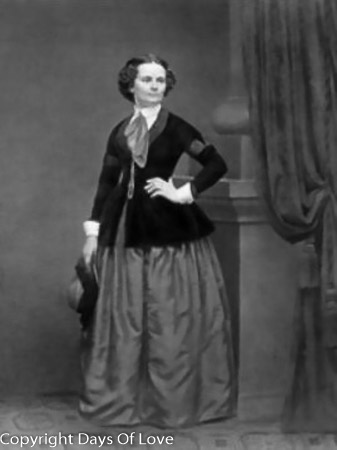 Harriet
Goodhue Hosmer (October 9, 1830 – February 21, 1908) was a
neoclassical sculptor, considered the most
distinguished female sculptor in America during the 19th century. She is
included as one of "the loyal subjects of Her Majesty" in The Court and Camp of
Queen Marian (attributed to Mary Boyle; published by
Emily Faithfull in 1868). William
Wetmore Story, writing to his Boston friend, poet James Russell Lowell, observed
that
Charlotte Cushman,
Harriet Hosmer,
Matilda Hays, and writer
Grace Greenwood formed "a
Harem (Scarem) of emancipated females".
Harriet
Goodhue Hosmer (October 9, 1830 – February 21, 1908) was a
neoclassical sculptor, considered the most
distinguished female sculptor in America during the 19th century. She is
included as one of "the loyal subjects of Her Majesty" in The Court and Camp of
Queen Marian (attributed to Mary Boyle; published by
Emily Faithfull in 1868). William
Wetmore Story, writing to his Boston friend, poet James Russell Lowell, observed
that
Charlotte Cushman,
Harriet Hosmer,
Matilda Hays, and writer
Grace Greenwood formed "a
Harem (Scarem) of emancipated females".
Hosmer is known
as the first female professional sculptor.[1]
A certain homoeroticism emerged, made all the more remarkable by the fact that
many prominent artists of this era—including
Thomas Eakins,
F. Holland Day,
John Singer Sargent,
Harriet Hosmer,
Edmonia Lewis, and
Anne Whitney—had intense romantic
attachments with members of their own sex.
Among other technical innovations, Hosmer pioneered a
process for turning limestone into marble. Hosmer once lived in an
expatriate colony in Rome, befriending many prominent writers and artists. She
called the widowed Englishwoman
Louisa Baring,
Lady Ashburton
“my sposa” and referred to herself as Ashburton’s “hubbie,” “wedded wife,” and
daughter. Writing to Ashburton of a marriage between monarchs, Hosmer added,
“They will be as happy in their married life as we are in ours”; in another
letter she promised “when you are here I shall be a model wife (or husband
whichever you like).” Harriet Hosmer adopted boyish dress and manners and
flirted openly with women, but Victorian lifewriting attests that dozens of
respectable Englishwomen traveling to Rome were eager to meet her. Her visitors
in the late 1860s included a diplomat’s wife, a philanthropic Christian woman,
and Anne Thackeray,
who traveled to Rome with Lady de Rothschild.
The community of talented women in Rome included artists whose lives and works
have become well known in art-historical circles:
Harriet Hosmer,
Edmonia Lewis,
Anne Whitney, and
Vinnie Ream; and those whose
reputations have remained (until now) buried in the historical record:
Emma Stebbins,
Margaret Foley,
Sarah Fisher Ames, and
Louisa Lander. In 1903,
Henry James immortalized this community of
American women sculptors in Rome by characterizing them as “that strange
sisterhood of American lady sculptors who at one time settled upon the seven
hills [of Rome] in a white marmorean flock.” Hosmer, Lander, Stebbins, and
Foley, under the mentorship of the thespian
Charlotte Cushman, formed a
close-knit and supportive community (though not without personal and
professional jealousies) that the author
Nathaniel Hawthorne rendered
with some sympathy in his romantic account of American artists in Rome, The
Marble Faun (1860).
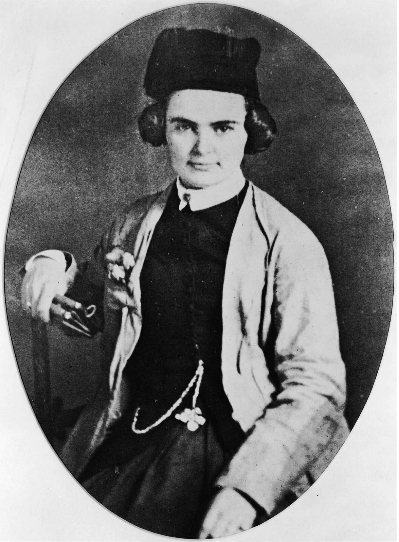
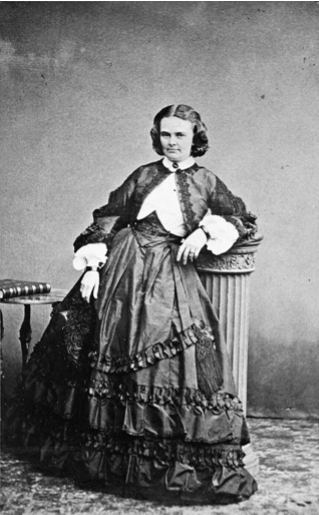
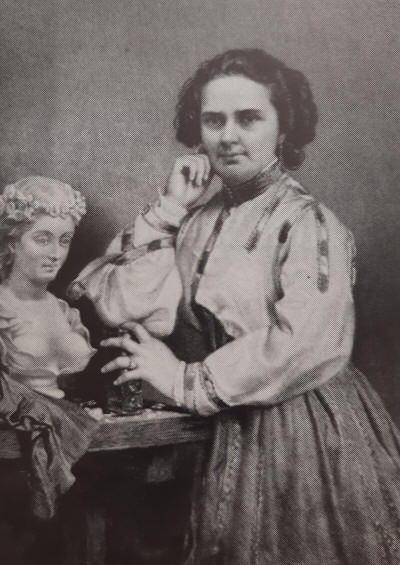

Harriet Hosmer, Hesper, 1852, marble, height 24 in. Watertown Free Public
Library, Mass.

Harriet Hosmer, Daphne, 1854, marble, 26 ½ × 19 ½ × 13 ½ in. Mildred Lane
Kemper Art Museum, Washington University in St. Louis, gift of Wayman Crow
Sr., 1880.
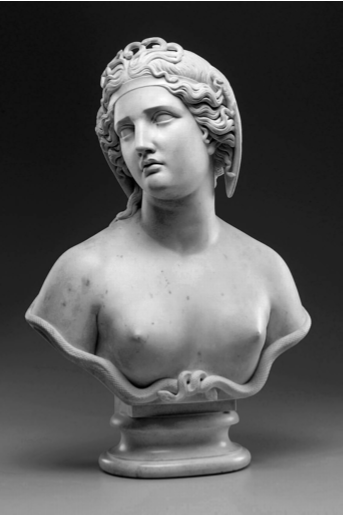
Harriet Hosmer, Medusa, 1854, marble. Detroit Institute of Arts, Founders
Society Purchase, R. H. Tannahill Foundation Fund.

Harriet Hosmer, Oenone, 1854–55, marble, 33 3/8 × 34 ¾ × 26 ¾ in. Mildred Lane
Kemper Art Museum, Washington University in St. Louis, gift of Wayman Crow
Sr., 1855.
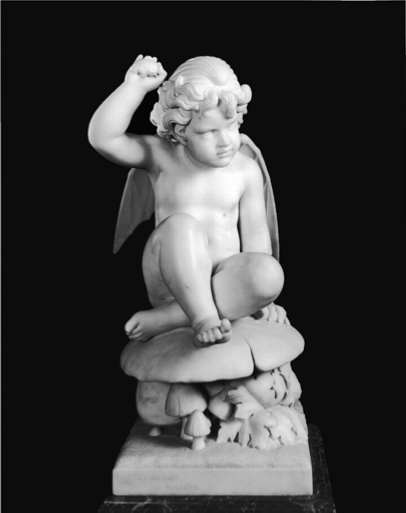
Harriet Hosmer, Puck, 1856, marble, 30 ½ × 16 5/8 × 19 ¾ in. Smithsonian
American Art Museum, Washington, D.C., gift of Mrs. George Merrill.

Harriet Hosmer, Zenobia in Chains, 1861, marble. © Courtesy of the Huntington
Art Collections, San Marino, Calif.

Harriet Hosmer, Sleeping Faun, after 1865, marble, 43 ½ × 41 × 16 ½ in. Museum
of Fine Arts, Boston, gift of Mrs. Lucien Carr, 12.709. Photograph © 2014
Museum of Fine Arts, Boston.
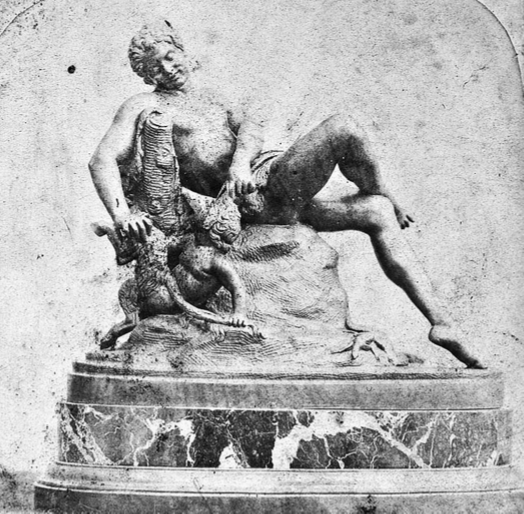
Harriet Hosmer, The Waking Faun, 1866–67, now lost. Photograph, Harriet
Goodhue Hosmer Papers, The Schlesinger Library, Radcliffe Institute, Harvard
University, A162-175f-6b.

Harriet Hosmer, Beatrice Cenci, 1856, marble. From the collections of the St.
Louis Mercantile Library at the University of Missouri–St. Louis.
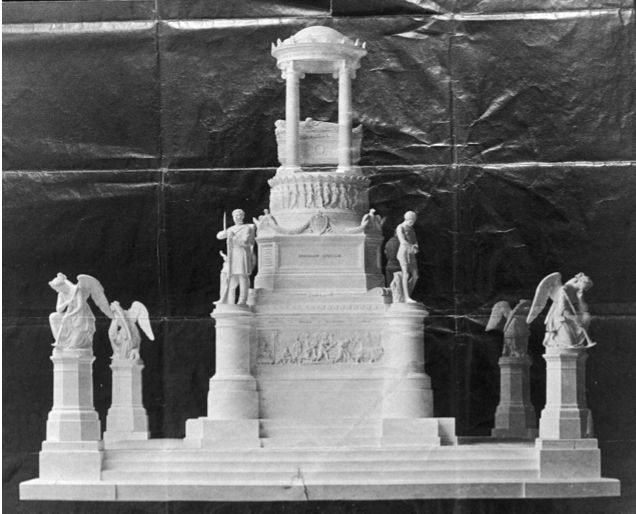
Harriet Hosmer, Freedman’s Memorial to Abraham Lincoln, 1866, plaster, now
lost. Watertown Free Public Library, Watertown, Mass.

Harriet Hosmer, African Sibyl, design for a portion of the Lincoln Monument,
ca. 1890, now lost. Watertown Free Public Library, Watertown, Mass.

Harriet Hosmer at work on the clay model of Thomas Hart Benton, ca. 1862.
Harriet Goodhue Hosmer Collection, The Schlesinger Library, Radcliffe
Institute, Harvard University, A162-72-11.
.JPG)
Mount Auburn Cemetery, Cambridge
Harriet Hosmer was born on October 9, 1830 at Watertown, Massachusetts,
and completed a course of study at Sedgewick School[2] in Lenox, Massachusetts. Her mother and
three siblings died during her childhood.[3]
She was a delicate child, and was encouraged by her father, physician Hiram
Hosmer, to pursue a course of physical training by which she became expert in
rowing, skating, and riding. He also encouraged her artistic passion. She
traveled alone in the wilderness of the western United States, and visited the
Dakota Indians.[4][5]
Boston’s community of reform-minded professional women created a fertile
environment for female accomplishment in the mid–nineteenth century. It was
these women whom the young sculptor sought out, gravitating toward such
pioneering figures as the writer and abolitionist
Lydia Maria Child and later
the successful thespian
Charlotte
Cushman. Encouraging Hosmer’s independence, Child had recognized something
special in the young girl. Hatty had “refused to have her feet cramped by the
little Chinese shoes, which society places on us all,” Child later wrote in an
article on the aspiring young artist. Most likely at Child’s urging, Dr.
Hosmer enrolled his daughter at Elizabeth Sedgwick’s Lenox Academy, a
progressive boarding school in the Berkshires for audacious girls.
In the 1840s and 1850s, the Berkshire town served as a cultural center for
Boston-based writers and intellectuals, including
Herman Melville,
Oliver Wendell Holmes,
Henry Ward Beecher, and
Nathaniel Hawthorne. It was also a magnet for an
international coterie of progressive women reformers, among them
Frances Ann
(Fanny) Kemble, the British actress turned abolitionist;
Harriet Martineau,
the British writer on women’s rights; Fredrika Bremer, the Finnish feminist;
and Anna Jameson, the British
feminist and historian—all of whom engaged the young minds at the Lenox Academy.
Hosmer came into contact with these powerful women while in Lenox. She
developed a lifelong attachment to
Catharine Sedgwick, who had
traveled to Europe in 1840, publishing Letters from Abroad to Kindred at Home
in 1841. At Catharine Sedgwick’s invitation, Kemble first visited Lenox in
1838. There, Sedgwick, Kemble, and the young Hosmer formed a close bond. A few
years later, Hosmer would attribute her decision to pursue a sculptural career
to her friendship with Kemble.
Hosmer showed an early aptitude for
modeling, and studied anatomy with her father. Through the influence of family
friend Wayman Crow she attended the anatomical instruction of Dr. Joseph
Nash McDowell at the Missouri Medical College (then the medical department
of the state university).[6]
She lived with Cornelia Crow, an
intimate friend she had met at the Lenox Academy, and her family. While in St.
Louis, she developed a lasting relationship with Cornelia’s father, Wayman
Crow, a leading citizen and philanthropist who would later become one of her
primary benefactors.
Hosmer studied in Boston and practiced modeling at
home until November 1852, when, with her father and her friend
Charlotte
Cushman, she went to Rome, where from 1853 to 1860 she was the pupil of
the Welsh sculptor John Gibson, and she was finally
allowed to study live models. On November 12, 1852,
Harriet Hosmer arrived in
Rome, accompanied by her father, Dr. Hiram Hosmer;
Sarah Jane Clarke Lippincott,
the journalist known professionally as Grace Greenwood;
Virginia Vaughn, a
girlhood friend from Lenox;
Charlotte
Cushman; Sallie Mercer, Cushman’s
African-American maid and “right-hand woman”; and
Matilda Hays, Cushman’s
partner, a feminist reformer and translator of George Sand’s novels. The
socially well-connected Vaughn had introduced Hosmer to Cushman in 1850 after
a performance in Boston. Hosmer was immediately taken with this strikingly
independent woman and developed a lifelong attachment to her. In a letter to
her childhood friend Cornelia Crow Carr, she wrote: “Miss Cushman and
Miss Hays (her friend and companion) have left Boston, and I can’t tell you
how lonely I feel. I saw a great deal of them during the three weeks that they
were in the city.... Isn’t it strange how we meet people in this world and
become attached to them in so short a time?” Cushman and Hays represented
models of creative freedom for Hosmer, who shared their residence at via del
Corso 28 in Rome.
Elizabeth Barrett Browning was taken with the household
of
Matilda Hays and
Charlotte Cushman at via del Corso 28: There’s a house of what I call emancipated women, she wrote to a friend. She met Harriet
Hosmer in 1853; the two were drawn to one another until the poet’s untimely death in 1861.
In her semiautobiographical verse novel, Aurora Leigh, of 1856, Barrett
Browning, using her popularity as a poet, gave voice to women’s struggles and
championed the talented women who surrounded her in Italy. Her protagonist,
Aurora, is based in part upon the fictional character Corinne and the young
Hosmer. Barrett Browning touted Hosmer’s liberated lifestyle in Rome, writing
that she “emancipates the eccentric life of a perfectly ‘emancipated female.’”
She continued, “[Hatty] lives here all alone (at twenty-two); dines and
breakfasts at the cafés precisely as a young man would; works from six o’clock
in the morning till night, as a great artist must, and this with an absence of
pretension and simplicity of manners which accord rather with the childish
dimples in her rosy cheeks than with her broad forehead and high aims.”
Fanny Kemble’s sister,
Adelaide Sartoris, who had
lived in Rome for two years, led a salon on Wednesday and Sunday nights in her
apartment atop the Spanish Steps. Trained as an opera singer, she performed
regularly at these cosmopolitan gatherings, which
Harriet Hosmer attended with regularity.
Kemble soon followed her sister to Rome, arriving in January of 1853. Hosmer,
enamored with the city and its community of independent women, wrote that the
two Kemble sisters were “like two mothers to me.”
Cushman was fiercely protective of her young female charges in Rome and
quickly made enemies with the influential American sculptor William Wetmore
Story. Writing to his friend the poet James Russell Lowell shortly after the
women’s arrival in Rome in 1853, Story described the “furore at 28 Corso,”
with its “harem (scarem) as I call it... [of] emancipated females who dwell
there in heavenly unity; namely, the Cushman, Grace Greenwood, Hosmer,” and
others.
Produced the year after her dear friend Cornelia Crow
married Lucien Carr, the Oenone expresses a warm sensuality redolent of
Hosmer’s and Crow’s “romantic friendship” in Lenox, an experience that
remained central to both their lives. In fact, the sculptor gave a bust of
Daphne to Cornelia as a “love gift” in the fall of 1854. “When Daphne
arrives, kiss her lips and then remember that I kissed her just before she
left me,” Hosmer wrote. However, with its peekaboo sensuality, Oenone
transgressed into the carnal world, suggesting a blatant sexuality. The
sculpture was never shown publicly in the nineteenth century, remaining
instead in the residence of Hosmer’s patron, where it was readily available
for Cornelia’s private viewing.
In 1854, Matilda Hays left Cushman for Hosmer,
which launched a series of jealous interactions among the three women. Hays
eventually returned to live with Cushman, but the tensions between her and
Cushman would never be repaired.
While living in Rome, Hosmer associated
with a colony of artists and writers that included
Nathaniel Hawthorne,
Bertel Thorvaldsen, William Makepeace Thackeray, and the two female
Georges, George Eliot and
George Sand. When in Florence, she
was frequently the guest of Elizabeth Barrett Browning and
Robert Browning at Casa Guidi.
The artists included
Anne Whitney,
Emma Stebbins,
Edmonia Lewis,
Louisa Lander,
Margaret Foley,
Florence Freeman,
and
Vinnie Ream.[8] Hawthorne was clearly describing these in
his novel ''The Marble Faun'', and Henry James called them a "sisterhood
of American ‘lady sculptors'."[9] As Hosmer is now
considered the most famous female sculptor of her time in America, she is
credited with having 'led the flock' of other female sculptors.[10]
Barbara Leigh Smith met
Harriet Hosmer in October 1854, was
struck by Hosmer’s unconventionality, describing her as ‘very sturdy, bright
and vigorous’, ‘the most tomboyish little woman I ever saw’. Further, she
commented: She looks more like a jolly little stone cutter than a lady, and
yet she is very fascinating, being so uncommonly clever and lively. She does
exactly what is most agreeable to herself and best for her work, and does
not care what any one says in the very least.
“Modest and gentle” by reputation,
Emma Stebbins was in 1856 the
newest member to join Rome’s women’s community.
Harriet Hosmer took Stebbins under her wing, escorting her to famous
sites and introducing her to members of the artistic community; the two rode
their horses together on the Campagna. Hosmer curiously described Stebbins
as her “wife” and as a scultrice (woman sculptor), perhaps using these
feminine appellations to allude to Stebbins’s passive and dependent nature.
Harriet Hosmer finished her Beatrice Cenci in 1856, in the midst of what
could only be called “Cenci-mania” in Rome. Artists and tourists flocked to
the ground-level gallery of the Palazzo Barberini to see what was then
considered the most beautiful portrait by Guido Reni, his Beatrice Cenci.
After arriving in Rome in 1859, Sophia Hawthorne was also thrilled to see
the painting in the flesh, located just downstairs from the lovely
apartments occupied by William Wetmore Story and his family. Hosmer began
her sculpture Beatrice Cenci in the fall of 1854, three years after
Guerrazzi had published his novel in Italy. She had been offered a
commission for a full-length figure from a colleague of Wayman Crow’s in St.
Louis—and she decided upon a statue of Beatrice Cenci. When shown in the
United States in 1857, the sculpture elicited a different response from its
viewers, one grounded, for the most part, in contemporary antipapist
rhetoric. Hosmer, a shrewd businesswoman at the age of twenty-six, exhibited
her Beatrice Cenci in London, Boston, New York, Philadelphia, and New
Orleans. She accompanied the sculpture to the United States, where large
crowds viewed the piece. When shown at Cotton’s Gallery in Boston, the
figure appealed to a wide audience and generated diverse responses,
including a uniquely American political reading.
In 1857, Hosmer received the commission for the Judith Falconnet memorial, a
tomb sculpture permanently installed in the church of Sant’Andrea delle
Fratte in Rome. In 1857, she opened her own workplace on via Margutta, at the base of the Pincian Hill, just down the street from the Palazzo Patrizi, a lovely old Renaissance palace that housed the studios of the American sculptors Randolph Rogers, Joseph Mozier, Chauncey Ives, and later
Margaret Foley. According to
Nathaniel Hawthorne, Hosmer occupied a lofty room, with a sky-light window; it was pretty well warmed with a stove; and there was a small orange-tree in a pot, with the oranges growing on it, and two or three flower shrubs in bloom.When
Hawthorne visited Hosmer’s studio in 1858, he was clearly troubled by the
nature of her femininity. “She had on petticoats, I think; but I did not
look so low,” the author offered with feigned modesty. “She had on a male
shirt, collar, and cravat,” a manly outfit, which she modified with a
feminized “brooch of Etruscan gold; and on her curly head was a picturesque
little cap of black velvet; and her face was as bright and funny, and as
small of feature, as a child’s.” Hawthorne thought her “very queer, but she
seemed to be her actual self, and nothing affected nor made-up; so that... I
give her full leave to wear what may suit her best, and to behave as her
inner woman prompts.” In the end, his suspicion of the manly woman became
clear: “I shook hands with this frank and pleasant little woman—if woman she
be, as I honestly suppose, though her upper half is precisely that of a
young man.”
In 1857, Hosmer began work on her Zenobia in Chains, creating a small-scale
version of the sculpture for which the British historian
Anna Jameson provided
advice and guidance. Jameson had long fought for women’s rights, especially
the right of women artists to enter the Royal Academy School in London. Her
support for the young sculptor bolstered Hosmer’s reputation while
stimulating the market for her work in Britain. Workmen from John Gibson’s
studio prepared the clay and armature for the full-sized model. Upon her
return from Tuscany in October 1858, she encountered not only the crisis
surrounding Louisa Lander’s
career but also malevolent rumors about her own work, “the malignant sarcasm
of some of [her] rivals,” Jameson explained, who were suspicious of her
professional association with Gibson. Jameson counseled the young artist to
ignore the comments heard at the Caffè Greco, the eatery near the Spanish
Steps where Anglo-American artists took their meals, engaged in conversation
and gossip, and at times learned of commissions. “The originality of a
conception remains your own, with the stamp of your mind upon it,” she wrote
to Hosmer. “Impertinent and malicious insinuations die away, [but] your work
and your fame [will] remain, as I hope, for a long, long future.” Zenobia
sailed for Britain in 1862 for display in the International Exposition in
London’s Crystal Palace. In May, Cushman, Stebbins, Gibson, and Hosmer
traveled to England to view the exhibition. As Hosmer was the only woman to
exhibit work at the London Exposition, her career began to surge. “The
majestic Zenobia,” the Irish feminist
Frances Power Cobbe explained, attracted attention by speaking to the
burgeoning women’s rights movement in Britain. She also showed the Medusa
bust owned by Lady Marian Alford
and the Puck, purchased by the Prince of Wales. The American astronomer
Maria Mitchell visited Hosmer’s
Roman studio in 1858 and described the technical process by which her fancy
piece Puck came into existence.
Bessie Rayner
Parkes met Harriet Hosmer in Italy in
May 1857, described Hosmer as ‘such a bright little creature; bright hair,
bright eyes … as busy as a bee’. Parkes was intrigued by the combination in
Hosmer’s dress of singularity and fashionability, and she was delighted by a
likeness to her own appearance: She is the funniest little creature not at all
rough or slangy but like a little boy…. There is much energy and spirit in a
pair of splendid grey eyes, her face is that of an arch faun…. She lives with
an old French lady, but conducts herself exactly as she chooses …. She has
short curled hair like mine, & usually swept back from a very broad brow,
wears a black hat and little feather everywhere, concerts & all, seeming quite
ignorant of bonnets; manages her petticoats with a certain extraordinary ease
suggestive of trousers – but the finishing and funniest point of all is a very
thin waist, & this strangely for a sculptor seems Hatty’s weak point, for all
her jackets fit quite tight & neat. Hosmer’s dedication, her ‘sublime
steadiness’, impressed her. When Hosmer visited London for the exhibition of
Beatrice Cenci, she called on Parkes at the offices of the Waverley Journal
and took out a subscription to the magazine. Parkes was introduced by
Matilda Mary Hays, who was to leave
Rome to become joint editor of The English Woman’s Journal; her essay on
Hosmer was printed in July 1858.
Frances Power Cobbe made
several excursions to Italy between 1857 and 1862. In Rome Cobbe met not
only Harriet Hosmer but a Welsh
sculptor, Mary Lloyd, who had
studied and worked with Rosa
Bonheur. When Cobbe, introduced by Lloyd, visited the French artist,
she reported: ‘Nothing I liked about her, so much, however, as her
interest in Hattie Hosmer, and her delight in hearing about her Zenobia
(triumphans) in the Exhibition.’ Cobbe and Lloyd returned to London in
1862 for what was to become a thirty-year partnership. Hosmer stayed with
the couple on her visits to Britain, and joined them in support of women’s
enfranchisement: Hosmer, Cobbe and Lloyd were members of the London
National Society for Women’s Suffrage in the late 1860s.
Allegations that Hosmer did not do her own work had circulated throughout
the Roman community since 1858. Hosmer was furious at the accusations.
Having heard these innuendos for too long, she hired a London lawyer to
defend her reputation. In January 1864 journals offered their apologies to
the artist; retractions were also printed in the London Times and the
Galignani Messenger in Rome.
Hosmer had once called Stebbins "wife". But it was with Cushman that
Stebbins shared rooms when they moved to Via Gregoriana, 38, in November, 1858. Hosmer
became "single", living separately at the same address for several years.
But soon Cushman and the headstrong Hosmer were at odds. Hosmer moved
accross the Piazza Barberini and next door to artist William Wetmore Story.
Eventually their resentments faded, but they never regained their closeness.
Charlotte Cushman held her first reception in her new home in January of 1859, beginning a tradition that would continue for many years. Mingling at this festive event were the feminist art historian
Anna Jameson, Fanny Kemble,
Adelaide Sartoris, and the British author and reformer
Mary Howitt, to name just a few. When the Irish feminist
Frances Power Cobbe came to town, she noted: There was a brightness, freedom and joyousness among these gifted Americans, which was quite delightful to me. Cushman had the gift of drawing out the best from all who came, explained
Emma Crow, the youngest daughter of the philanthropist Wayman Crow.
With the success of the Zenobia in 1858, Harriet Hosmer began plans for a
new luxurious studio in Rome at via delle Quattro Fontane 26. She jokingly
called it the Palazzetto Barberini (the small Barberini palace) because it
was situated just down the street from the grand Palazzo Barberini, where
the Story family resided. This was one of the choicest neighborhoods in
Rome. “When the studio is done,” she claimed “without exaggeration, there
will be no studio in Rome which can hold a candle to it.” In 1865, her new
expanded workplace became one of the most famous studios in the city. “Miss
Hosmer has one of the most beautiful studios in Rome,” one visitor opined,
with “plants and flowers and a fountain setting for her statues and busts.”
In her “palace-like studio,” Hosmer presented a new public persona to the
art world. No longer the “little impish boy” of earlier years; she now
regularly dressed in full Victorian wear—flouncy skirts and lacy cuffs—and
sported longer, more carefully coiffed hair, a feminized image in keeping
with her mature, professional stature. Her weekly reception days at the new
studio were highly celebrated, as she received all her visitors in person.
“It was pleasant to find a bright, piquant, woman,” one visitor noted,
“instead of the Amazon... which our fancy had conjured from the shadowy
realm of gossip.”
Medusa, her first commissioned sculpture, was bought by Mrs. Samuel
Appleton, wife of the prosperous Boston merchant and philanthropist, who
later owned its pendant, Daphne. In the early 1860s, the Duchess of St.
Albans, Lady Sibyl Mary Grey, and Lady
Marian Alford, art patron,
amateur painter, and intimate of Hosmer, purchased busts of Medusa.
In the 1860s, Henry Wreford promoted a
movement of women artists in Rome known as the 12 Star Constellation amongst
whom were
Charlotte Cushman,
Margaret Foley,
Harriet Hosmer,
Edmonia Lewis,
Emma Stebbins. Henry Wreford was a figure of curiosity for historians and literary experts of the time but remained relatively unknown to the wider public despite his substantial role within the political world of pre-unified Italy and his promotion of the culture of gender.
Edmonia Lewis met
Harriet Hosmer when the sculptor
stopped by her studio in 1865 to see her Bust of Colonel Robert Gould Shaw.
Suitably impressed with the work, Hosmer encouraged Lewis to visit her in
Rome. After selling one hundred plaster copies of the Shaw bust at fifteen
dollars apiece, Lewis earned enough money to fund her sojourn to Italy.
Hosmer put her Sleeping Faun into marble in 1865, in response to the
popularity of Hawthorne's novel, The Marble Faun. An American critic at the
Dublin Exhibition of 1865, where Hosmer first showed the work, described the
sculpture as “less coarse... and less inebriate” than the Barberini Faun, a
Hellenistic sculpture that presents an image of uninhibited sexuality. The
powerful male body reclines in a drunken state, with legs splayed and
genitals in full view. Bierstadt alludes to this bawdy sculpture in his
Roman Fish Market, in which he poses one of the sleeping Italian men in this
indecent pose, clearly referencing the bestial nature of the Italian male.
In contrast to the Barberini Faun, Hosmer’s faun, the critic continued, is
“not a savage, but a comparatively graceful and refined impersonation of
sylvan nature; one of the fauns of Arcady.” The Irish feminist
Frances Power Cobbe wrote at
length about the sculpture and described it as “an image of ease and joy,
and pure, sensuous, delight-brimming existence.”
In 1866 the Englishman Henry Wreford, a freelance correspondent in Italy, described the female artists in Rome collectively as “a fair constellation . . . of twelve stars of greater or lesser magnitude, who shed their soft and humanising influence on a profession which has done so much for the refinement and civilization of man.” Some of Wreford’s twelve stars, incidentally all American sculptors, are still recognizable names even today:
Margaret Foley,
Florence Freeman,
Harriet Hosmer,
Edmonia Lewis, and
Emma Stebbins. Less known now are the American painter sisters
Mary Elizabeth Williams and
Abigail Osgood Williams, the Italian sculptor
Horatia Augusta Latilla Freeman and her relative, the painter
Adah Caroline Latilla, Irish painter and sculptor
Jane Morgan, and English sculptor
Isabel Cholmelay
(her studio was at Palazzetto Sciarra).
It is not entirely clear which of these women produced art of “greater
magnitude” in Wreford’s mind; his discussion is rather general overall.
Indeed, in his article and in others of the period, even the better-known
women tend to earn more comments about their personalities, appearances, or
behaviors than about their art.
Henry T. Tuckerman, an American writer who lived in Italy, included a brief section on American female sculptors in Rome in his Book of the Artists (1867). In less than five pages, in a volume of more than 600 pages total, he discussed several members of Henry Wreford’s constellation, including
Margaret Foley,
Florence Freeman,[9]
Harriet Hosmer,
Edmonia Lewis, and
Emma Stebbins. He briefly mentioned
Sarah Fisher Clampitt Ames,
Louisa Lander,
Vinnie Ream, and
Anne Whitney, though by that date Lander and Ames had returned to the United States and Ream had not yet arrived in Rome. Tuckerman’s description was hardly complementary; he noted that public appreciation of their art seemed to derive from “national deference to and sympathy with the sex” and from a lack of understanding about art in general. Yet even his dismissive analysis shows awareness of and interest in these women and their activities.
In The Waking Faun, which Hosmer completed in 1867, the young faun awakened to
catch the baby satyr at its mischief. The sculpture did not receive the same
acclaim as its predecessor. Hosmer had hoped to exhibit both in Paris in
1867 but was unable to resolve The Waking Faun to her satisfaction,
explaining that it “fell too far short of the other.”
Within a few years, both Jameson and Barrett Browning were dead. Jameson
died in 1860; Barrett Browning in 1861. After the loss of these powerful
mentors, Hosmer’s life in Rome took an astounding turn. She entered into a
friendship with Maria Sophia, the queen of Naples. In 1868, she began work
on a full-length sculptural portrait of the queen. “She came to me the other
day dressed exactly as she was” in Gaeta, Hosmer explained. “It will make an
interesting statue, for the subject is invested with so much that is
historic.” No images of the sculpture exist; whether it was ever translated
into marble or just remained in clay is unclear to this day.
In 1873 Hosmer's studio was at Via Margutta, 5.
Hosmer was drawn to the Neoclassical style, which was easy to study given
her presence in Rome. She enjoyed studying mythology, and she created various
representations of mythological icons, such as the sculpture of ''The Sleeping
Faun'', which includes intricate details of elements such as his hair, the
grapes, and the cloth draped over him.
She also designed and constructed
machinery, and devised new processes, especially in connection with sculpture,
such as a method of converting the ordinary limestone of Italy into marble, and
a process of modeling in which the rough shape of a statue is first made in
plaster, on which a coating of wax is laid for working out the finer forms.
Hosmer later lived in Chicago and Terre Haute,
Indiana.
She was devoted for 25 years to Louisa Baring, Lady
Ashburton, widow of Bingham Baring, 2nd Baron
Ashburton (died 1864).[11]
Hosmer died at Watertown, Massachusetts, on February 21, 1908, and is buried in
the family plot at Mount Auburn Cemetery, Cambridge.[12] Aside from the work she produced, Harriet Hosmer made her mark on
art history and feminist and gender studies.{{citation needed|date=June 2016}}
As the National Museum of Women in the Arts put it, "Harriet Goodhue Hosmer
defied 19th-century social convention by becoming a successful sculptor of large
scale, Neoclassical works in marble."[13]
In the
19th century women did not usually have careers, especially careers as
sculptors. Women were not allowed to have the same art education as men, they
were not trained in the making "great" art such as large history paintings,
mythological and biblical scenes, modeling of figure. Women usually produced
artwork that could be done in their home, such as still lives, portraits,
landscapes, and small scale carvings, although even Queen Victoria allowed
her daughter, the Princess Louise, Duchess of Argyll, to
study sculpture.
Hosmer was not allowed to attend art classes because
working from a live model was forbidden for women, but she took classes in
anatomy to learn the human form and paid for private sculpture lessons. The
biggest career move she made was moving to Rome to study art. Hosmer owned her
own studio and ran her own business. She became a well-known artist in Rome, and
received several commissions.
Hosmer commented on her break from
tradition by saying "I honor every woman who has strength enough to step outside
the beaten path when she feels that her walk lies in another; strength enough to
stand up and be laughed at, if necessary."
Mount Hosmer, near Lansing, Iowa, is named after Hosmer; she
won a footrace to the summit of the hill during a steamboat layover during the
1850s.[14]
During World
War II the Liberty ship Harriet Hosmer was built in Panama City,
Florida, and named in her honor.[15]
A book of
poetry, ''Waking Stone: Inventions on the Life Of Harriet Hosmer'', by Carole
Simmons Oles, was published in 2006.
Her sculpture, ''Puck and Owl'', is featured on the
Boston Women's Heritage Trail.[16]
The Hosmer School in Watertown, Massachusetts is a public elementary school
named in her honor.
My published books:


BACK TO HOME PAGE

- https://en.wikipedia.org/wiki/Harriet_Hosmer
- Marcus, Sharon. Between Women (p.200). Princeton
University Press. Edizione del Kindle.
- The Indomitable Spirit of Edmonia Lewis: A Narrative Biography
Harry Henderson, Albert Henderson
Untreed Reads, 2012
- Dabakis, Melissa. A Sisterhood of Sculptors .
Penn State University Press. Edizione del Kindle.
-
Anne Whitney Abroad, 1867-68 (19thc-artworldwide.org)
-
Ferentinos, Susan,. Interpreting LGBT History at Museums and Historic
Sites (Interpreting History) . Rowman & Littlefield Publishers.
Edizione del Kindle.
-
Cherry, Deborah. Beyond the Frame (p.117). Taylor and Francis. Edizione
del Kindle.
-
Improper Bostonians Lesbian and Gay History from the Puritans to Playland
By History Project Staff · 1998
-
The Hub of the Gay Universe, An LGBTQ History of Boston, Provincetown, and
Beyond, by Russ Lopez, 2019
-
Rupp, Leila J.. Sapphistries (Intersections) (p.133). NYU Press. Edizione
del Kindle.
 Harriet
Goodhue Hosmer (October 9, 1830 – February 21, 1908) was a
neoclassical sculptor, considered the most
distinguished female sculptor in America during the 19th century. She is
included as one of "the loyal subjects of Her Majesty" in The Court and Camp of
Queen Marian (attributed to Mary Boyle; published by
Emily Faithfull in 1868). William
Wetmore Story, writing to his Boston friend, poet James Russell Lowell, observed
that
Charlotte Cushman,
Harriet Hosmer,
Matilda Hays, and writer
Grace Greenwood formed "a
Harem (Scarem) of emancipated females".
Harriet
Goodhue Hosmer (October 9, 1830 – February 21, 1908) was a
neoclassical sculptor, considered the most
distinguished female sculptor in America during the 19th century. She is
included as one of "the loyal subjects of Her Majesty" in The Court and Camp of
Queen Marian (attributed to Mary Boyle; published by
Emily Faithfull in 1868). William
Wetmore Story, writing to his Boston friend, poet James Russell Lowell, observed
that
Charlotte Cushman,
Harriet Hosmer,
Matilda Hays, and writer
Grace Greenwood formed "a
Harem (Scarem) of emancipated females".














.JPG)

